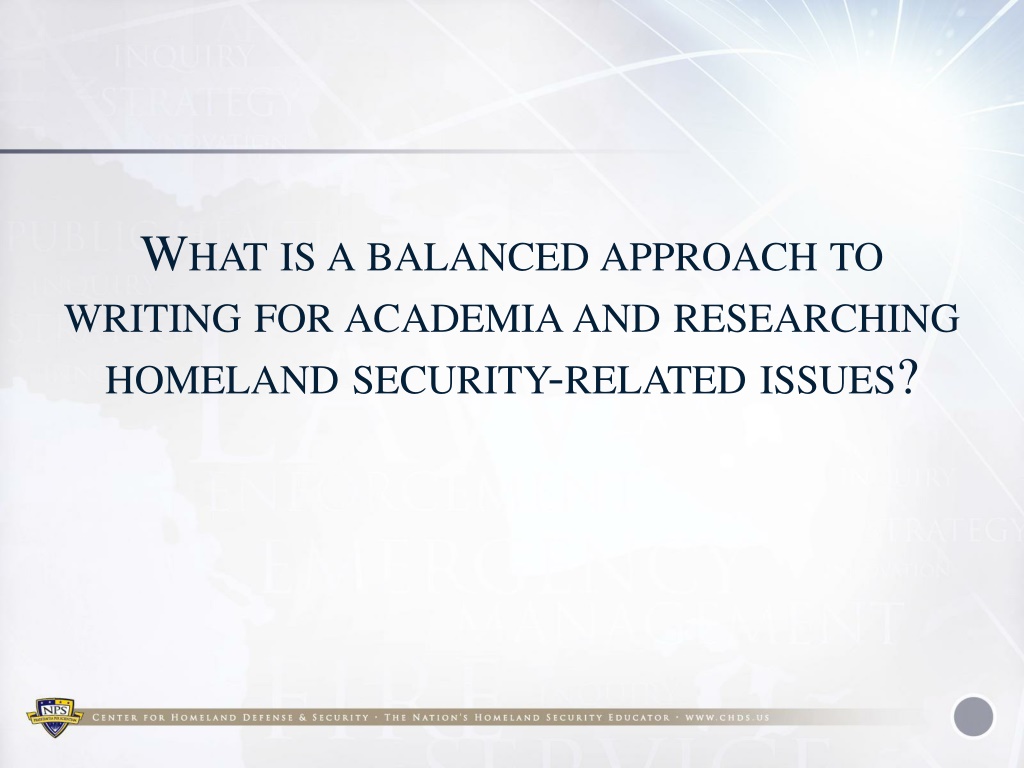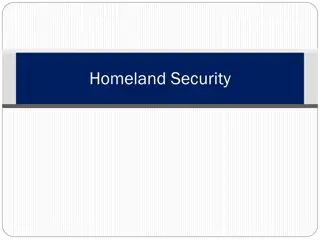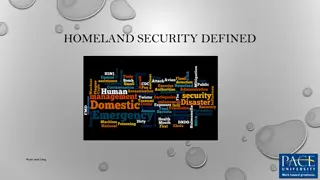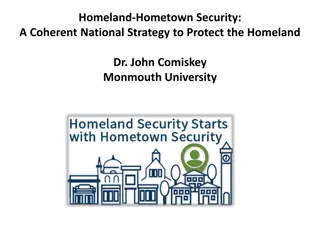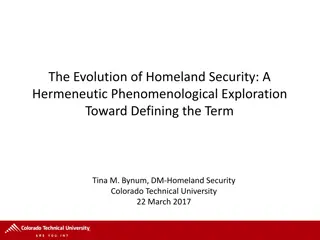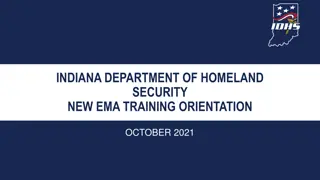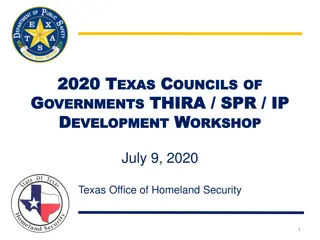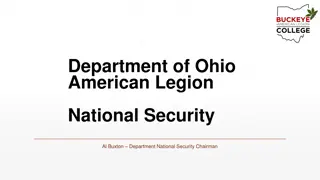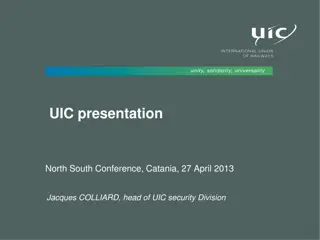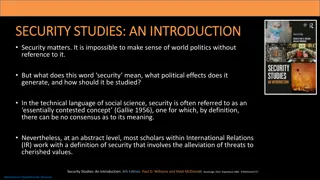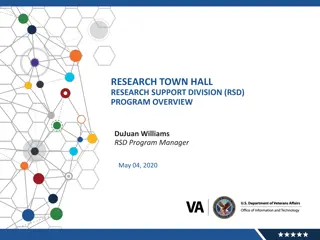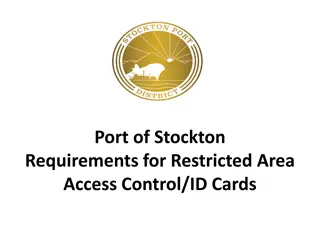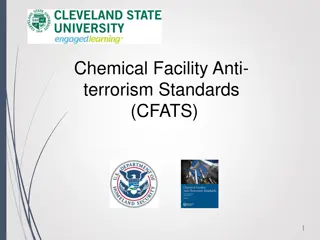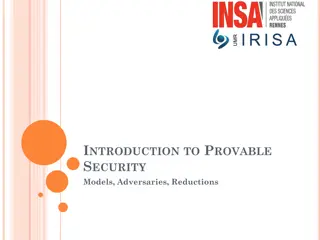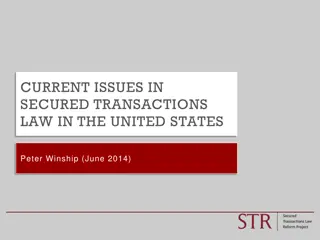Writing and Research Approach for Homeland Security Issues
A balanced approach to writing for academia and researching homeland security-related issues involves questioning biases, avoiding predetermined outcomes, understanding one's knowledge base, considering the requester's influence, following a structured research process, and utilizing critical thinking tools like Bloom's Taxonomy for analysis and evaluation.
Download Presentation

Please find below an Image/Link to download the presentation.
The content on the website is provided AS IS for your information and personal use only. It may not be sold, licensed, or shared on other websites without obtaining consent from the author. Download presentation by click this link. If you encounter any issues during the download, it is possible that the publisher has removed the file from their server.
E N D
Presentation Transcript
WHAT IS A BALANCED APPROACH TO WRITING FOR ACADEMIAAND RESEARCHING HOMELAND SECURITY-RELATED ISSUES?
QUESTIONS WORTH CONSIDERING BEFORE STARTING A RESEARCH PROJECT What is my bias? Have I predetermined the outcome (answer)? o How might this affect my research strategy approach? What is my suspected and actual knowledge base? o Is it actually possible I am not as smart as I think I am on this issue? Who is the requester of my research? o Has the prospective recipient purposefully or unintentionally biased or otherwise affected my approach to this project?
RESEARCH PROCESS Step 5b: Step 1: Interpret and Analyze Data (Method II) What are you studying and why? (Problem Statement) Doing research is like finding a piece of a puzzle, but you have no idea what the puzzle looks like. As the pieces form together, you start getting a picture. UCLA Medical School Step 5a: Step 2: Collect and Organize Data or Evidence (Method I) What are you trying to find out? (Research Question(s)) Step 4: What are your hypotheses or tentative solutions? Where do you fit into the Lit? (Argument) Step 3: What is already known about this problem/topic? (Lit Review)
WARNING SIGNS USEFUL TERMS According to As stated in There are multiple ways to view this issue ___ discussed this issue in Contrast: On the one hand ; however, on the other I think It is common knowledge Most people I, I, I Judgment terms: comprehensive, thorough, well thought out definitive statements unsupported claims
CRITICAL THINKINGINTHE HOMELAND SECURITY ENVIRONMENT USING BLOOM S TAXONOMYTO YOUR ADVANTAGE
WHYSTUDY BLOOMSTAXONOMY? One of many ways to approach critical thinking A thematic approach to building strong analytic thought Feedback provided on the assignments refers to the various levels of Bloom s taxonomy. o It will assist in moving the student from the descriptive, to the analytic, to the creation of ideas (recommendations)
LEVEL 1 -- KNOWING Tell List Describe Relate Locate Write Find State Name
TELLME-- WHATISHOMELANDSECURITY? Homeland security is a concerted national effort to prevent terrorist attacks within the United States, reduce America's vulnerability to terrorism, and minimize the damage and recover from attacks that do occur.
LEVEL 2 -- UNDERSTANDING Interpret Outline Discuss Explain Distinguish Predict Restate Translate Compare Describe
UNDERSTANDINGTHEDEFINITIONOF HLS concerted national effort prevent terrorism reduce vulnerability minimize the damage recover
LEVEL 3 - APPLYING Solve Show Use Illustrate Construct Complete Examine Classify
APPLYINGTHE DEFINITION Show how the definition of homeland security can be used to allocate resources in your jurisdiction.
LEVEL 4 - ANALYZING Distinguish Examine Compare Contrast Investigate Categorize Identify Separate
ANALYZINGTHE DEFINITION Certain non-terrorist events that reach catastrophic levels can have significant implications for homeland security. The resulting national consequences and possible cascading effects from these events might present potential or perceived vulnerabilities that could be exploited, possibly eroding citizens confidence in our Nation s government and ultimately increasing our vulnerability to attack. ThisStrategy therefore recognizes that effective preparation for catastrophic natural disasters and man-made disasters, while not homeland security per se, can nevertheless increase the security of the Homeland.
LEVEL 5 -- EVALUATING Verify Argue Recommend Assess Discuss Rate Determine Judge Select Choose Decide Justify Debate Prioritize
EVALUATINGTHE DEFINITION Why doesn t the definition include all hazards? Why isn t homeland security an aspect of national security? There are four national objectives, not three. What s up with that? What else is not addressed that should be?
LEVEL 6 - CREATING Invent Compose Predict Plan Construct Design Imagine Propose Devise Formulate
CREATINGADEFINITION Proposed Homeland Security Definition: Secure the institutions and citizens of the U.S. by providing the knowledge and tools necessary to meet the challenges of tomorrow.
Higher order thinking Creating Generating new ideas, products, or ways of viewing things Designing, constructing, planning, producing, inventing. Evaluating Justifying a decision or course of action Checking, hypothesising, critiquing, experimenting, judging Analysing Breaking information into parts to explore understandings and relationships Comparing, organising, deconstructing, interrogating, finding Applying Using information in another familiar situation Implementing, carrying out, using, executing Understanding Explaining ideas or concepts Interpreting, summarizing, paraphrasing, classifying, explaining Remembering Recalling information Recognizing, listing, describing, retrieving, naming, finding
